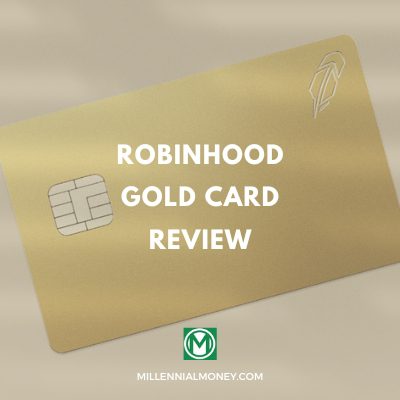So you’re probably wondering how credit cards work and why people use them so much for purchases?
Congratulations, my friend, it sounds like you’re in the right place to learn more (and possibly ready to apply for your first credit card!)
Or maybe you have a credit card already, but you want to know how to use it responsibly.
In this post we’ll review the basics of how credit cards actually work, how to use them to your advantage, and how to avoid common fees and interest.
Here’s our low down on what you need to know to become a responsible and savvy credit card user.
What is a Credit Card?
A credit card is a thin rectangular piece of plastic, issued by a bank, business or finance company.
Credit cards allow the account holder to make purchases with credit — meaning they don’t have to pay any money upfront at time of purchase.
Later however, the debt must be settled and paid for. This can either be done by paying off the credit card with cash, check, or (most commonly) a bank transfer.
Typically, when credit cards are paid off within ~30 days or within the same billing cycle, there is no interest charged. But for credit card holders that delay paying their debts and continue to borrow money, this is where compound interest starts to kick in and where most people get into major trouble with credit card debt.
How Do Credit Cards Work?
Credit cards allow you to purchase goods and service now, then pay for it at a later date. Think of each purchase like a short term loan.
Every time you swipe your credit card, the costs of your purchase are covered by your credit card company. Then once a month, the credit card company will send you an invoice will all of your transactions and ask you to settle the debt.
If you do not pay off your debts (or delay paying past the due date), the credit card company will start charging considerable interest on the amount outstanding. This is why it’s very important to only purchase things you can afford to pay for later. It also helps to set up automatic credit card payments, so you never accidentally miss a bill.
Before issuing you a card, the credit card provider will approve you for a certain “limit”, which is the maximum available credit you can spend on that card. The credit limit the assign to you is based on your credit worthiness and usage history.
Now that you have a basic understanding of how credit cards work, let’s talk about how to apply for one.
How To Get a Credit Card
To be approved for most credit cards, you need to have a good credit history. The company issuing the card wants to make sure you are a good borrower and will pay back your debts in a timely manner.
The minimum credit requirements are different for every credit card. The very best rewards credit cards are difficult to get without years of history paying your accounts on time. Other cards–such as student credit cards and credit cards designed for consumers with less-than-perfect credit, have less stringent requirements. Most of the credit cards still require you to have a minimum credit score of 650, but some cards will approve you with a score of 550 (this is considered a bad credit score). Unfortunately, the cards at the lower-end of the credit spectrum are expensive: They don’t have rewards and come with sky-high interest rates and, often, annual fees.
Your credit score is made up of many factors, but most importantly you’ll need to show you have:
- a few years of credit history
- on-time payments
- a low credit utilization ratio, meaning you are no maxing out all of your cards
You can establish credit history before getting your first credit card by getting a loan from a bank, a secured credit card, or the “old school” trick of applying for a store credit card with a low limit (usually no more than $500).
Having good credit is worth it, because once your score is 650 or above you can apply for credit cards with some sweet, sweet benefits such as introductory 0% APR for balance transfers and purchases, unlimited cash back, and more.
How Do Secured Credit Cards Work?
Sometimes patience is the best financial plan. While you’re building your credit up to what is considered “good” or “excellent” status of 650 or above, you might want to use secured credit cards. If you’re starting from scratch and have never had a credit card, student loan, car loan, or any other type of credit, you may have no other choice than to begin with a secured card.
Secured credit cards are great for people who have little credit history, or who are digging themselves out of damaged credit.
Secured credit cards are linked to a cash deposit that you make to equal the line of credit. They provide extra security to the lender because if the borrower doesn’t pay their balance, they can just withdraw the money from your deposit.
To open a secured credit card, you make a deposit to a lender in the amount you want your credit line to be.
For example, if you deposit $500, you will have a credit limit of $500.
After a period of making your payments, you’ll eventually be able to qualify for an unsecured credit card in which your credit limit is strictly based on your worthiness and history of making your payments.
Part of any healthy credit card habit is monitoring your credit report for suspicious activity. There are other awesome tools available for this too, such as Experian, which also provides tips on how to build your credit score. Experian also offers free credit monitoring.
How Do Credit Card Payments Work?
Your credit card payment will be due every month on the same day of the month. With a credit card, you must pay at least the minimum payment due—usually calculated as between 2 and 4 percent of your total balance—to avoid late fees. To avoid finance charges (interest), you must pay the entire balance due.
It’s super-important to note that you should never charge more to your credit card than you can afford to pay in full at the end of the month. This is even more important when you’re just getting started, because you’re creating a new habit. When I first used credit cards, I used them as “free money” to live beyond my means for several years. By only making minimum payments, I could spend a lot more money than I had for a long time. Unfortunately, eventually the amount of credit at my disposal dried up, and I was stuck owing thousands of dollars in interest on top of the charges. Don’t fall into this trap!
Your payment is typically due about 2-3 weeks after your billing cycle ends.
For example, if your billing cycle is from August 14 – September 14, you will likely have to make your minimum payment for the amount of debt you accrued somewhere in the ballpark of October 7.
You have the choice to set up auto-pay so that your payment is automatically deducted from your checking account every month.
Autopay ensures you never miss a payment because that’s when you’ll be hit with a fine.
How Does Interest Work on Credit Cards?
To reiterate, paying off your entire monthly balance ensures you won’t pay interest on any of your expenses.
Credit card interest is known as the highest of all consumer debt, and it is usually anywhere from 12-28% APR. APR stands for “Annual Percentage Rate.”
If your APR is 28%, it doesn’t mean you’ll pay $280 every month you have a $1000 balance, but if you keep a balance of $1000 on your account each month, within one year’s time you will pay $280.
APR is divided into the 12 months of the year, so in one billing cycle, you will pay 1/12th of the annual rate. So, going back to our example of $1000.
If you have a $1000 balance and 25% APR, you would pay 1/12th of 25% of $1000 for every month you carry a balance. This works out to just over 2.01% every month or about $21 of interest.
You’ll need to remember your APR when you make your payment because if you carry a balance on your credit card, your interest fees will be subtracted from any payment you make.
Let’s say your minimum payment on a $1000 balance was $58. With $21 in interest, a $58 minimum payment only ends up chipping away $37 of your balance. That’s why it’s always best to pay that balance off in full.
Credit Card Fees
Besides interest, credit cards sometimes have other fees. They include annual fees, which are simply a price you pay to own the card.
Annual fees can be as high as $250 for premium travel rewards cards with major perks.
People with multiple credit cards usually choose 1-2 cards to pay an annual fee for and opt for no annual fee cards for the rest.
On average, annual fees are about $95, but if a credit card has a high annual fee it is usually because the rewards make it worth it!
Other credit card fees include balance transfer fees or a fee for transferring a balance from a credit card with a higher interest rate to a card with a lower interest rate.
Balance transfer fees are usually about 3-4%, and worth it when you end up saving more by paying less interest on your debt.
Last, if you ever need cash fast and decide to get a cash advance – meaning borrowing cash from credit limit – you will typically have to pay fees of 5% or more.
Benefits of Credit Cards
We know we just outlined a lot of fees and guidelines for how to make the most of your credit card.
It might make it sound like having a credit card is hard work, but don’t let that stop you.
When used responsibly, credit cards are not only the most convenient way to pay: They can also be rewarding, unlocking airline miles or giving you cash back. If you’re interested, here are the best airline rewards credit cards to help you travel the world on a budget or a percentage of cash back on all your purchases.
You can also benefit from other bonuses like rental car insurance and trip cancellation insurance – not to mention unlimited cashback rewards.
They can also help you if you are a new up and coming entrepreneur trying to get your business off the ground. Here are the best small business credit cards to help out with cash flow.
If you have credit card debt, pay off your balances and set up an emergency fund before you apply for a new credit card.
Once you have the budget to pay your balance in full, you’ll love watching your points rack up and give you the key to freedom.
Debit Cards vs. Credit Cards
At the surface, debit cards and credit cards look the same. You use them both to make purchases for goods and services. But the difference between debit cards and credit cards is how money flows behind the scenes.
When you make a purchase with your debit card, money gets immediately deducted from your bank account and paid straight to the retailer. You must have enough money available in your checking account to cover the full purchase.
With a credit card, instead of deducting money from your checking account, your credit card company pays the retailer for you. At a later time, you are responsible for settling the debt with your credit card issuer.




Comments are closed.
Comments are closed here.